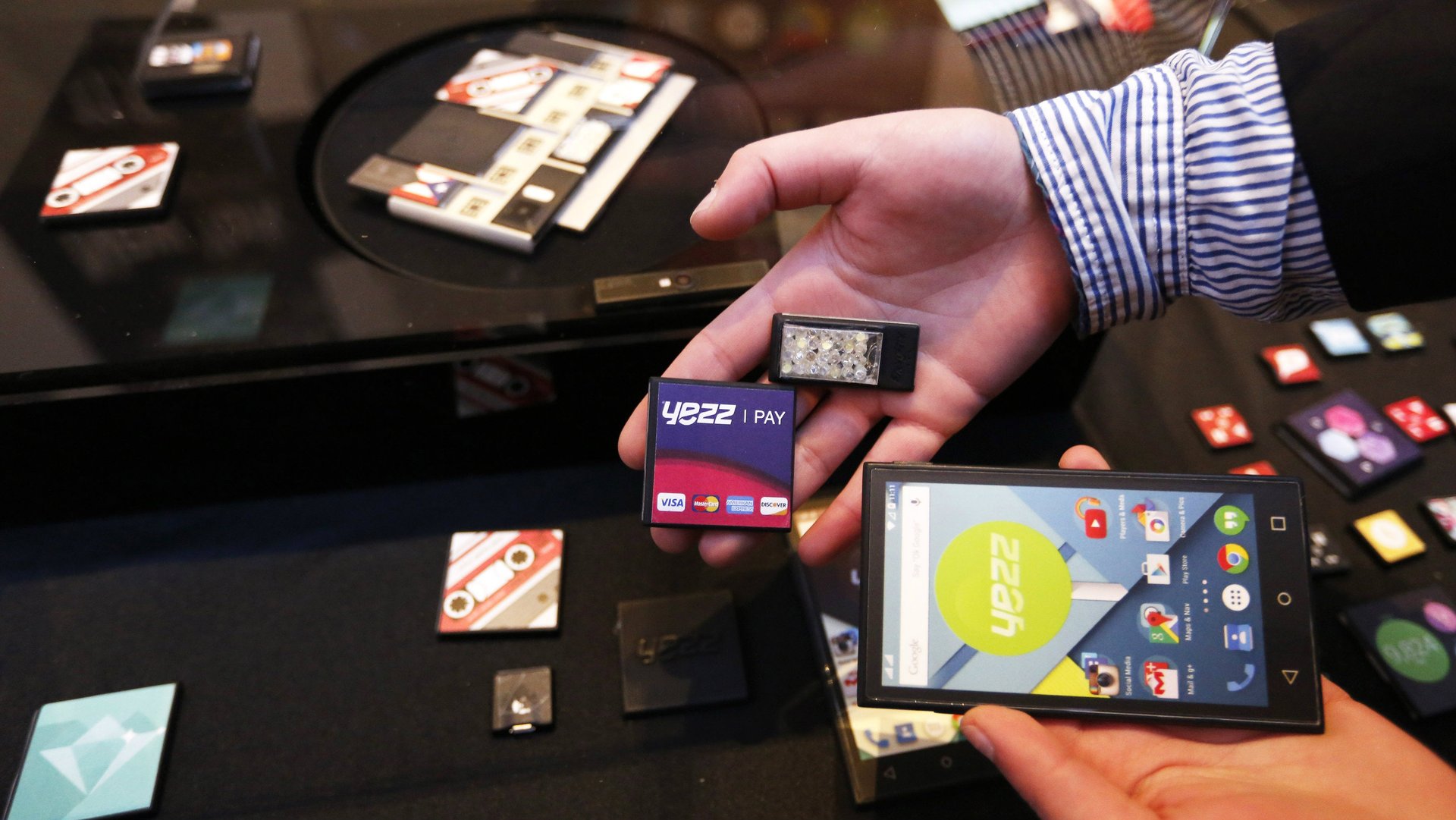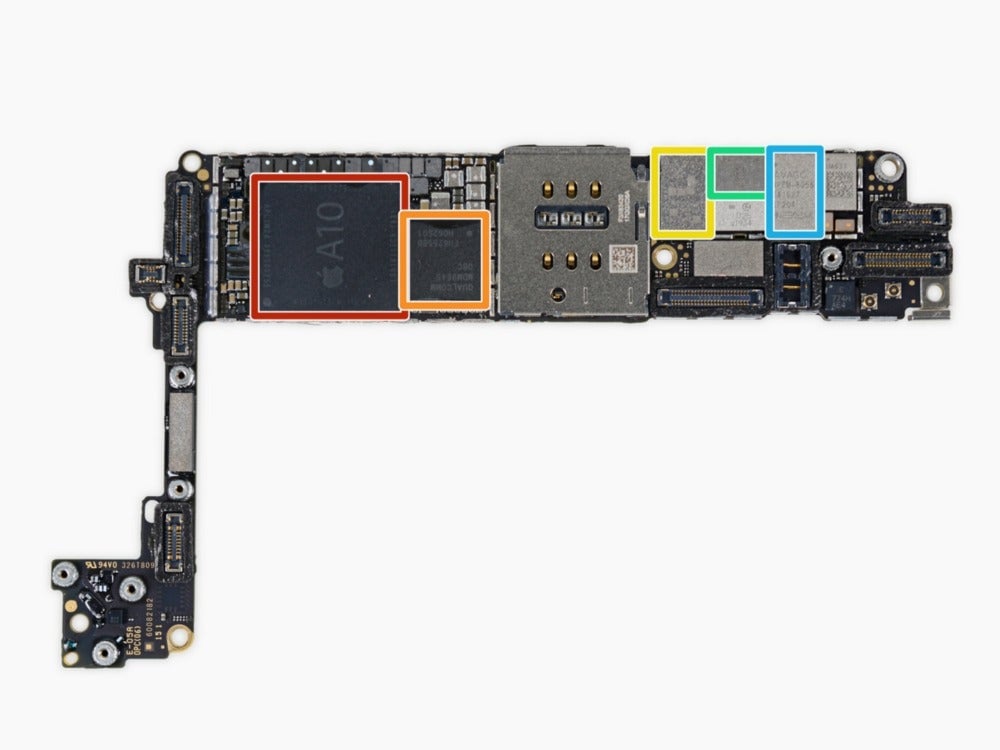There’s no such thing as a good modular smartphone and there never will be
What’s not to like in a modular smartphone that can be configured to one’s liking and updated to protect it against the evils of planned obsolescence? As it turns out, a lot. Starting with the mere matter of implementation.


What’s not to like in a modular smartphone that can be configured to one’s liking and updated to protect it against the evils of planned obsolescence? As it turns out, a lot. Starting with the mere matter of implementation.
When, after months of rumors, Google’s Ara project was announced in Oct. 2013, what struck me the most was the incredible credulity.
The theory was simple and pleasant. Unlike a traditional PC where you could upgrade the hard disk, add RAM, or get a faster video card for gaming, existing smartphones weren’t upgradable. To get a higher resolution sensor or connect to a higher speed cellular network, you’d have to throw away your old phone and buy a new one, and repeat the expensive routine every year. The answer to such planned obsolescence and lack of flexibility was obvious: Modularize the handset! Break it down into modules: camera, processor, network interface, storage, video processor, and display.
This was the Phonebloks concept. Created as an open-source project by Dutch designer Dave Hakkens, adopted by Motorola (then owned by Google), and christened Project Ara:

The official announcement had all the right words [as always, edits and emphasis mine]:
Led by Motorola’s Advanced Technology and Projects group, Project Ara is developing a free, open hardware platform for creating highly modular smartphones. We want to do for hardware what the Android platform has done for software: create a vibrant third-party developer ecosystem, lower the barriers to entry, increase the pace of innovation, and substantially compress development timelines.
In particular, the Android analogy resonated. Project Ara hardware will succeed just like the free and open software platform on which it runs. What’s not to like?
Modularity proponents included Clayton Christensen, the father of disruption theory, who proclaimed that “in the end modularity always wins” and predicted the iPhone’s eventual demise (a sonorous forecast without dates or numbers).
One didn’t have to be a Christensen disciple to believe in the power of modularity. The rise of the Wintel PC offered abundant data. After IBM lost control of its creation, the PC thrived as designers continued to improve the various layers of its modular architecture—save those controlled by the Wintel cartel.
Indeed, Wintel was an extraordinary success. At its peak, the coalition had garnered a 95% share of the personal computer market. Mutatis mutandis—the same causes producing the same effects—the smartphone industry would certainly enjoy even greater success than the PC because, unlike Windows, Android was free and open. And the ARM architecture yielded more vendor choices, design flexibility, and lower prices than Intel’s iron-fisted dominance.
Following this analogue line of reasoning, Apple’s integrated iPhone was destined to fail, just as the monolithic Mac failed against modular PCs. The skeptics who said that modular phones sounded like another case of “If it’s all pros and no cons, it’s a con” were told to return to their walled gardens and consider Android’s overwhelming success.
There are two flaws in the “Modularity always wins” theory.
In order to succeed, “disruptive modularity” needs a stable architecture with well-defined and documented boundaries. Module innovators need to be able to slide their creations into place without playing havoc with the rest of the edifice. This is how it worked in the Wintel PC world…sort of. In PC reality, as many of us have experienced, the sliding in and out of modules wasn’t so neat and often landed us in Device Driver purgatory. In the mid-nineties, one Microsoft director told me that the Redmond company actually spent more engineering resources on drivers than on Windows’ core software.
In the smartphone world, boundaries are even less stable and less clearly defined than in the PC world. Boundaries are constantly…disrupted by architectural innovations in signal processing, GPU (graphics processor) advances, and on-again/off-again integration with the main CPU. More generally, the system on a chip (SoC) at the center of a smartphone is the antithesis of modularity. Different SoC designers will integrate more and more functions, but in different ways depending on the designers’ goals, constraints, and philosophies. By its very nature, the SoC is the opposite of modularity and changes constantly as a result of technical progress and competitive forces. There goes the stable, well-defined architecture.
The second flaw in the theory can be seen by looking at the PC industry itself. Although there are still some beige, blue, and black boxes from HP and Dell that can be opened with a Philips screwdriver, and bloodied knuckles, to allow the installation of a better graphics card for gaming, these are a diminishing minority. In practice, PCs are becoming more integrated, as we see with laptops.
After more than two years in quasi-stealth mode, Project Ara received great exposure at Google’s I/O conference in May 2016. As the Wired article titled “Project Ara Lives: Google’s Modular Phone Is Ready for You Now“ explains, the pieces were falling into place for the Dream Machine to ship later in the year, including…
…a small compact case for storing makeup, and a small hollow pillbox. They’re also building “style” modules, which don’t do anything except look nice.
More recently, SlashGear has revealed that one of Ara’s modules was…
…a tiny aquarium of sorts that would contain algae and tardigrades (water bears) visible through a small microscope.
The end came in September when Project Ara was officially terminated and Regina Dugan, the head of Google’s ATAP (Advanced Projects and Technology), departed for Facebook.
Looking back at Ara, did Google seriously think that a modular phone was realistic? From the start, Ara skeptics pointed to the feats of miniaturization and high-precision machining in “conventional” smartphones produced by Apple, Samsung, and their competitors. Watch the iFixit iPhone 7 teardown video and ask yourself: How does one modularize such a highly integrated, puzzle box device, replace minute solder joints with reliable connectors, and still keep the result within acceptable size limits? Consider the integrated circuits on the iPhone’s “motherboard”:

And this isn’t even half of it…iFixit identifies 24 ICs on the tiny logic board.
What’s in this story for us?
First, be wary of “It’ll work because it’d be nice if it did” injunctions. They can be expensive.
Second, beware of stenography—of coverage that uncritically repeats a company’s PR. The Wired article referred to above is a “good” example: It doesn’t do much more than run through Google’s Ara talking points.
Most important, strongly-worded theories are less interesting than works exploring their cracks, where the theories don’t seem to work. This is how physics keeps moving forward and this is also how our understanding of business should advance. In the case of Project Ara, the unexamined consensual acceptance of disruption theory led many to believe that “modularity always wins” meant smartphones would (and should) follow the same path as PCs.
(For a closer examination of disruption theory’s shaky foundation, one can turn to a well-researched New Yorker article: “THE DISRUPTION MACHINE—What the gospel of innovation gets wrong.” Or to a no-less-detailed examination in The Innovator’s Victory, a blog post by Darel Rex Finley.)